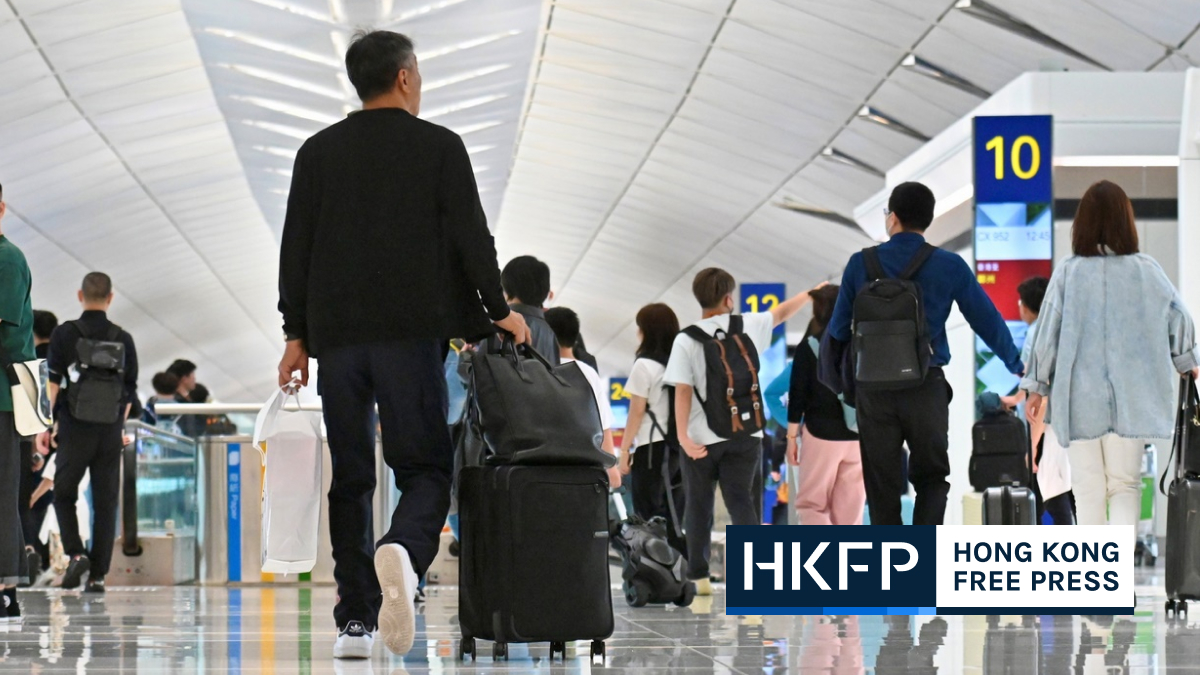Hong Kong’s MTR Corporation (MTRC) has said a loose, European-made energy absorption device was the cause of a recent train fault that affected around 1,500 rush-hour commuters in its initial report to the authorities.

Henry Cheung, the chairperson of the Association of Hong Kong Railway Transport Professionals, told RTHK on Friday morning that according to the MTRC’s preliminary findings, the incident was “unlikely” to have been the result of maintenance problems or human mishaps.
The engineer said the device in question operated like a shock absorber in the train’s coupler mechanism. Its function, Cheung said, was to keep the carriages closely connected when the train is in motion.
“During regular train inspections, [staff] do disassemble the coupler, but not the energy absorption device,” Cheung said, adding that maintenance personnel would only perform visual inspections on the specified device unless there was any “strange wear and tear.”
He said the MTR would have to send the entire device back to the supplier if it needed inspecting or repair as it could not be easily reassembled. But Cheung added that the device should be “very durable” and did not require frequent checks.
Initial findings
A train on the Tseung Kwan O line was brought to a sudden halt at around 8:30 a.m. on Monday, forcing around 1,500 commuters to be evacuated through the dark railway tunnel to a station platform.
After the incident, the government demanded the MTRC to submit a preliminary report by Thursday and detailed investigation findings within two months.
Meeting with the press after submitting the initial report on Thursday afternoon, MTRC’s Operations Director Tony Lee said they found that an energy absorption device inside the coupler of the sixth carriage was loose.

The gangway between the sixth and seventh car was therefore extended, triggering the fail-safe protection system and bringing the train to a stop,
Lee said the gangway and coupler had remained intact and connected at the time of the incident. “People may have seen in some photos that there was a gap. Those were [taken] in the process of separating the train and moving it back to the depot,” Lee said.
According to Lee, the device in question was sourced from an European supplier. A technical team from the supplier had arrived at Hong Kong on Wednesday and was working with the MTRC to “look into the root cause” of the issue.
The MTRC operations director did not directly address reporters’ questions on whether human errors was involved, but said staff had been following the guidelines provided by the device’s supplier.
Monday’s incident was the second MTR fault within three weeks. When asked whether the frequent mishaps were related to a shortage of MTRC staff, Lee said the current employee drain was “a big challenge.” However, the company “had different means of arranging enough resources and manpower for work related to railway maintenance,” he added.
He said that the board of the MTRC had asked the company to “look into the asset management system and review the maintenance mechanism,” and it would do so accordingly.

After receiving the report, a spokesperson of the Transport and Logistics Bureau said in a Thursday statement that “the [MTRC] is duty-bound to provide safe and reliable railway services. The Government is deeply concerned about the recent railway incidents.”
‘Disappointing’
Hours after MTRC’s press meeting, lawmaker Stanley Li of pro-Beijing party DAB said in a statement that he thought the railway service provider’s response was “disappointing” as it did not disclose the frequency of inspection on the concerned device, or when it was last examined.
Li added that it was “extremely dissatisfactory” for MTRC to have to invite overseas providers to assist with the probe. “If there are no suitable engineers in Hong Kong, when an emergency situation happens on a train it will be impossible to provide support and the best solutions at once, making an incident more difficult to resolve.”
Support HKFP | Policies & Ethics | Error/typo? | Contact Us | Newsletter | Transparency & Annual Report | Apps
Help safeguard press freedom & keep HKFP free for all readers by supporting our team

LATEST FROM HKFP
HKFP has an impartial stance, transparent funding, and balanced coverage guided by an Ethics Code and Corrections Policy.
Support press freedom & help us surpass 1,000 monthly Patrons: 100% independent, governed by an ethics code & not-for-profit.










